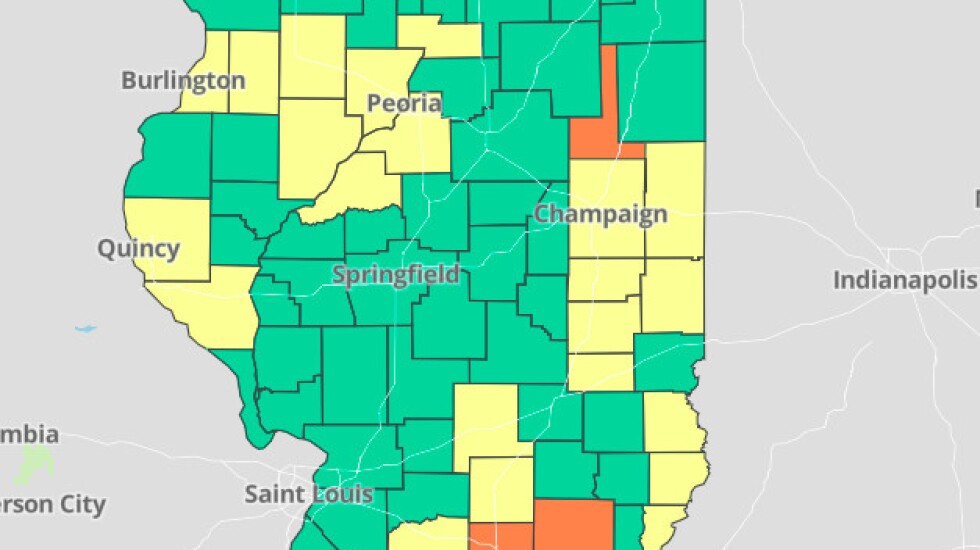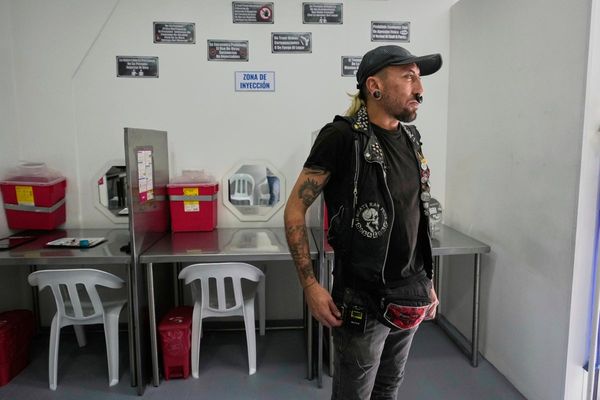
For the first time in almost five months, Chicago’s COVID-19 risk level is considered low by federal standards, as coronavirus cases and hospitalizations continue a gradual decline across most of Illinois.
The statewide map that was covered in orange for much of the summer — indicating a high level of transmission as determined by the U.S. Centers for Disease Control and Prevention — is now a deep green across Cook County and the collars, officials said Friday.
The “low” designation means most residents can safely interact with others indoors without a face covering, though masks are still recommended on public transit and for anyone who has been exposed to a person with COVID.

Besides staying up to date with vaccinations, experts still urge residents to practice caution.
“COVID is very much still with us, and health care and other settings serving more vulnerable Chicagoans may maintain masking policies,” Chicago Public Health Commissioner Dr. Allison Arwady said in a statement.
And the basic tenets of the pandemic still apply, Arwady said: “Stay home if you are sick and get tested for COVID. Consider wearing a well-fitting mask like a KN95 in crowded indoor settings, especially if you are at high risk for severe illness. Ask your doctor about anti-viral COVID medication if you do get sick. And, most importantly, get up-to-date on your vaccines before cold weather sets in.”
Chicago and Cook County rose from the “low” to “medium” levels in early May, and then hovered between “medium” and “high” levels throughout the summer as the highly infectious BA.4 and BA.5 Omicron subvariants of COVID flared across the nation.
Cases have now dropped in Chicago by 27% over the past week, with about 372 people testing positive per day, not including at-home tests. Hospitalizations in the city are down about 32% since last week, with 24 COVID patients entering wards per day.
Those encouraging patterns have played out statewide, too. The state has reported an average of 2,482 new cases per day over the past week, a 32% decline compared to a month ago. Hospitals were treating a total of 1,069 COVID patients Thursday night, a 22% drop since last month.
New COVID-19 cases by day
Graphic by Jesse Howe and Caroline Hurley | Sun-Times
Source: Illinois Department of Public Health
Graph not displaying properly? Click here.
Three downstate counties are still at the high risk level, and 33 are at medium, according to the CDC.
Meanwhile, Illinoisans are rolling up sleeves for COVID vaccinations in the greatest numbers seen since last winter. About 19,000 doses of the new bivalent booster — re-tooled to combat the latest versions of the virus — have gone into arms each day over the last week.
“This is an encouraging sign as we head into the fall season and face a potential increase in COVID-19 cases and hospitalizations,” Illinois Public Health Director Dr. Sameer Vohra said in a statement. “These vaccines are especially important for those most vulnerable to severe illness, such as those individuals over 50, those with underlying medical conditions, and those who are immunocompromised.”
For help finding a shot, visit vaccines.gov.







